Pop-ups on your browser’s screen that asking to update Adobe Flash Player or Java is a sign that you computer is infected with an adware or potentially unwanted program (PUP). These pop-ups are totally fake and not created by developers of Java or Adobe Flash Player. All of these pop-ups are used by cyber criminals to distribute malware, trojans, adware, potentially unwanted programs (PUPs) and browser hijackers.
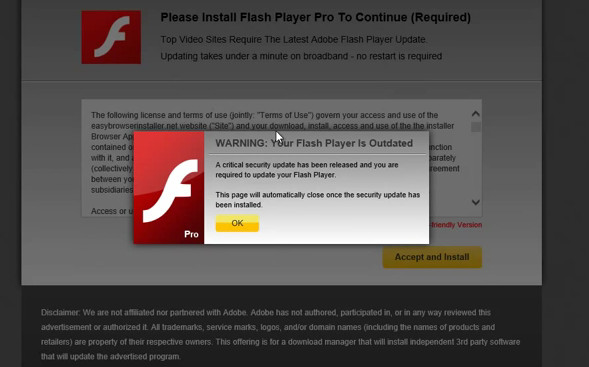
The fake update Adobe Flash Player or Java pop-up can be varied: different sized warning pop-ups or boxes titled with “Adobe Flash Player Update”, “WARNING: Your Flash Player is Outdated”, “Please install a Flash Player to continue” or “Java Recommended Update”. All of these fake warnings are have a “Accept and Install”, “Run Update”, “Download” or “Click to install now” button. Instead of installing an official update for Adobe Flash Player or Java, you will agree to download a malware, trojan, adware or a malicious program onto your PC.
The fake update Adobe Flash Player or Java pop-up is caused by a malicious extension for Google Chrome, Internet Explorer, Mozilla Firefox. It has been installed by an adware and PUP that usually infects system through the use a free programs such as free pdf creator, free video player, free youtube downloader. So, when you have installed a free software that you need, this adware has been installed automatically too.
The adware is not a virus, but the virus behaves similarly. As a rootkit hides in the system, modifies internet browser settings and blocks them from changing. Also the adware can install additional web browser extensions, addons and modules that will inject advertisements within the Google Chrome, Microsoft Internet Explorer, Mozilla Firefox and Microsoft Edge’s screen. Moreover, the adware may install internet browser hijacker that once started, will modify the internet browser’s start page and search engine. And finally, the adware can collect a wide variety of personal information such as what web sites you are opening, what you are looking for the Internet and so on. This information, in the future, may be transferred to third parties.
So, if your computer is infected with adware that shows a fake requests to update Java or Adobe Flash Player, then most importantly, do not wait! Clean your computer as soon as possible. Use the step-by-step guide below.
How can you prevent the Adobe Flash Player popup
The ‘ad supported’ software usually come bundled with free programs that downloaded from the Net. Which means that you need to be proactive and carefully read the Terms of use and the License agreement properly. For the most part, the adware will be clearly described, so take the time to carefully read all the information about the program that you download off the Net and want to install on your machine. In the Setup wizard, you should choose the Advanced, Custom or Manual installation mode to control what components and additional software to be installed, otherwise you run the risk of infecting your PC system with an infection like the adware that generates fake Update Java or Adobe Flash Player popups.
How to remove Adobe Flash Player or Java pop-up virus
The simple answer is right here on this page. We have put together simplicity and efficiency. It’ll help you easily to clean your personal computer of ad-supported software. Moreover, you can select manual or automatic removal method. If you are familiar with the PC then use manual removal, otherwise use the free anti-malware tool designed specifically to remove adware that causes unwanted Adobe Flash Player pop-up. Of course, you can combine both methods. Read this manual carefully, bookmark or print it, because you may need to close your internet browser or reboot your PC system.
- Uninstall suspicious and unknown programs by using Windows Control Panel
- Disinfect the browser’s shortcuts
- Remove Adobe Flash Player pop-up from FF
- Delete Adobe Flash Player or Java pop-up from Google Chrome
- Get rid of Adobe Flash Player or Java popup from IE
- Get rid of unwanted Scheduled Tasks
Uninstall suspicious and unknown programs by using Windows Control Panel
We recommend that you start the machine cleaning procedure by checking the list of installed applications and delete all unknown or suspicious programs. This is a very important step, as mentioned above, very often the malicious software such as ‘ad supported’ software and browser hijackers may be bundled with freeware. Uninstall the unwanted programs may remove the unwanted advertisements or web-browser redirect to unknown or annoying sites.
Windows 8, 8.1, 10
Press Windows key
Windows XP, Vista, 7
First, click “Start” and select “Control Panel”.
It will display the Windows Control Panel like below.

Next, click “Uninstall a program” ![]()
It will display a list of all programs. Scroll through the all list, and uninstall any suspicious and unknown programs. To quickly find the latest installed software, we recommend sort applications by date of installation in the Control panel.
Disinfect the browser’s shortcuts
When the ‘ad supported’ software is started, it can also change the browser’s shortcuts, adding an argument like “http://site.address” into the Target field. Due to this, every time you start the web-browser, it will be redirected to an annoying ads.
To clear the web-browser shortcut, right-click to it and select Properties. On the Shortcut tab, locate the Target field. Click inside, you will see a vertical line – arrow pointer, move it (using -> arrow key on your keyboard) to the right as possible. You will see a text which starts with “http://” which has been added here. You need to remove it.

When the argument is removed, press the OK button. You need to clean all shortcuts of all your web browsers, as they may be infected too.
Remove Adobe Flash Player pop-up from FF
First, run the Firefox. Next, click the button in the form of three horizontal stripes (![]() ). It will open the drop-down menu. Next, click the “Help” button (
). It will open the drop-down menu. Next, click the “Help” button (![]() ).
).

In the Help menu, press the “Troubleshooting Information”. In the upper-right corner of the “Troubleshooting Information” page, click “Refresh Firefox” button.

Confirm your action, click the “Refresh Firefox”.
Delete Adobe Flash Player or Java pop-up from Google Chrome
Like other modern web browsers, the Chrome has the ability to reset the settings to their default values and thereby remove the fake Update Adobe Flash Player pop-ups which are caused by the adware.
At first, launch the Chrome. Next, press the button in the form of three horizontal stripes (![]() ). It will appear the main menu. Click on the option named “Settings”. Another way to open the Chrome’s settings – type chrome://settings in the browser adress bar and press Enter.
). It will appear the main menu. Click on the option named “Settings”. Another way to open the Chrome’s settings – type chrome://settings in the browser adress bar and press Enter.

The web browser will display the settings screen. Scroll down to the bottom of the page and click on the “Show advanced settings” link. Now scroll down until the “Reset settings” section is visible, as on the image below and click the “Reset settings” button.
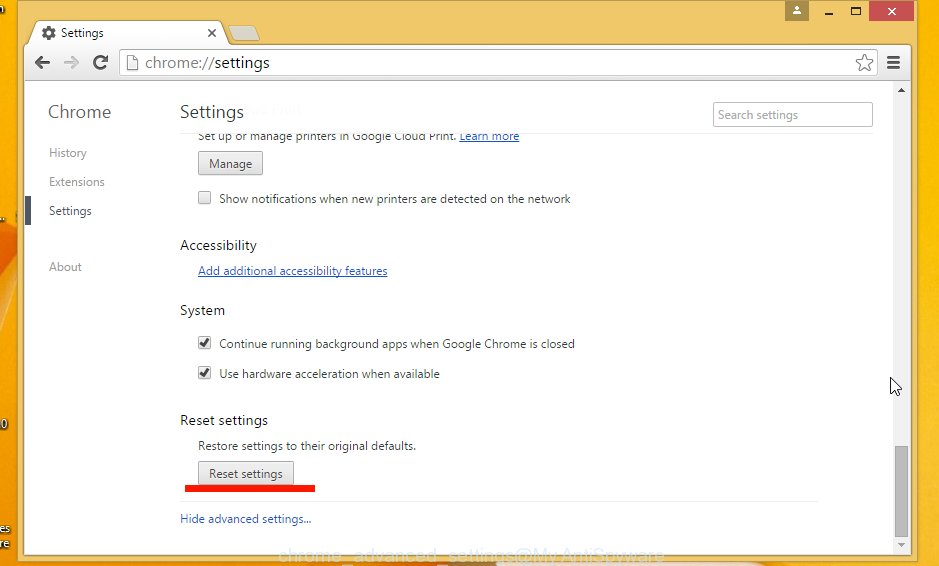
The Chrome will display the confirmation dialog box. You need to confirm your action, click the “Reset” button. The program will run the process of cleaning. When it’s finished, the web browser settings including the ‘block pop-ups’ option back to the values that have been when the Google Chrome was first installed on your machine.
Get rid of Adobe Flash Player or Java popup from IE
First, run the IE, then click the button in the form of gear (![]() ). It will display the Tools drop-down menu as on the image below. Next, click the “Internet Options”.
). It will display the Tools drop-down menu as on the image below. Next, click the “Internet Options”.

In the Internet Options window click on the Advanced tab, then click the Reset button. The Microsoft Internet Explorer will open the “Reset Internet Explorer settings” window as shown on the image below. Select the “Delete personal settings” check box, then click on “Reset” button.

You will now need to restart your computer for the changes to take effect.
Get rid of unwanted Scheduled Tasks
Once installed, the adware can add a task in to the Windows Task Scheduler Library. Due to this, every time when you launch your computer, it will open fake Update Java or Adobe Flash Player page. So, you need to check the Task Scheduler Library and get rid of all tasks that have been created by ‘ad-supported’ program.
Press Windows and R keys on your keyboard simultaneously. It will open a prompt which titled as Run. In the text field, type “taskschd.msc” (without the quotes) and press OK. Task Scheduler window opens. In the left-hand side, click “Task Scheduler Library”, as shown on the screen below.
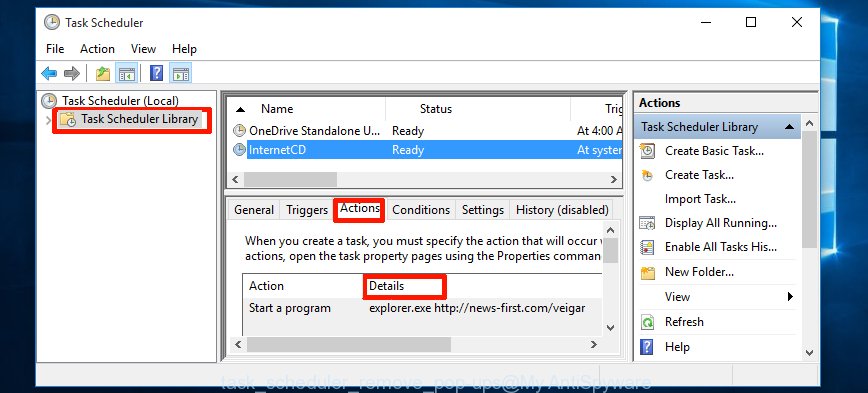
Task scheduler, list of tasks
In the middle part you will see a list of installed tasks. Select the first task, its properties will be display just below automatically. Next, click the Actions tab. Necessary to look at the text which is written under Details. Found something like “explorer.exe http://site.address” or “chrome.exe http://site.address” or “firefox.exe http://site.address”, then you need remove this task. If you are not sure that executes the task, then google it. If it is a component of the malicious program, then this task also should be removed.
Further click on it with the right mouse button and select Delete as shown below.

Task scheduler, delete a task
Repeat this step, if you have found a few tasks that have been created by malicious software. Once is complete, close the Task Scheduler window.
Get rid of Adobe Flash Player popup automatically
You can delete fake Update Adobe Flash Player pop-ups automatically with a help of Malwarebytes Free. We recommend this free malware removal tool because it can easily get rid of adware, browser hijackers, potentially unwanted programs and toolbars with all their components such as files, folders and registry entries.
Download Malwarebytes Free on your computer from the link below. Save it on your Desktop.
327072 downloads
Author: Malwarebytes
Category: Security tools
Update: April 15, 2020
When downloading is finished, close all windows on your PC. Further, open the file named mb3-setup. If the “User Account Control” prompt pops up as on the image below, click the Yes button.

It will show the “Setup wizard” which will help you install Malwarebytes on the computer. Follow the prompts and do not make any changes to default settings.

When the setup is finished successfully, click Finish button. Then Malwarebytes will automatically start and you can see its main window as on the image below.
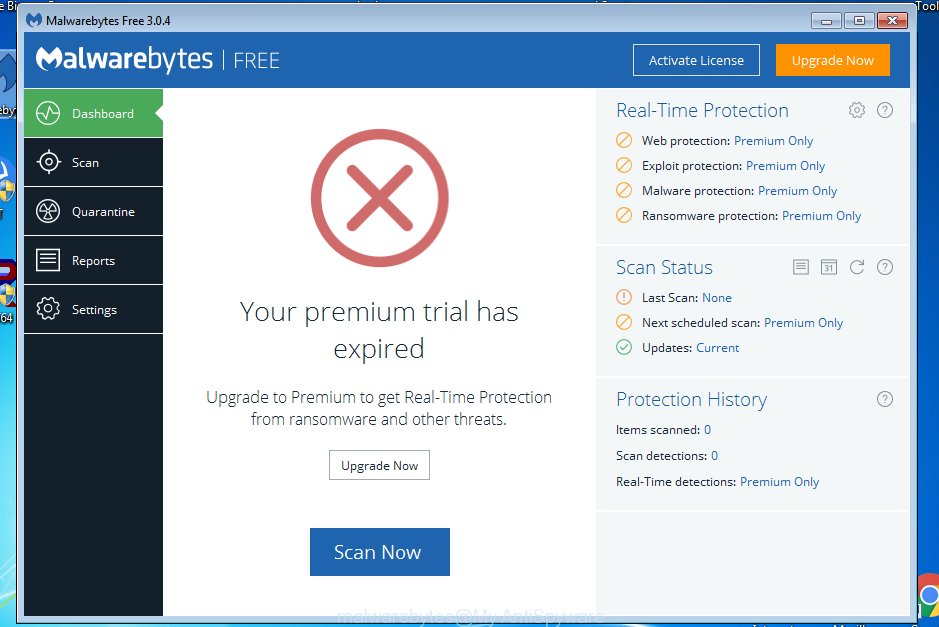
Next, press the “Scan Now” button to perform a system scan for the malware and ad supported software which cause the Adobe Flash Player popup within web-browser. When a threat is found, the number of the detected objects will change accordingly. Wait until the the checking is complete. Please be patient.
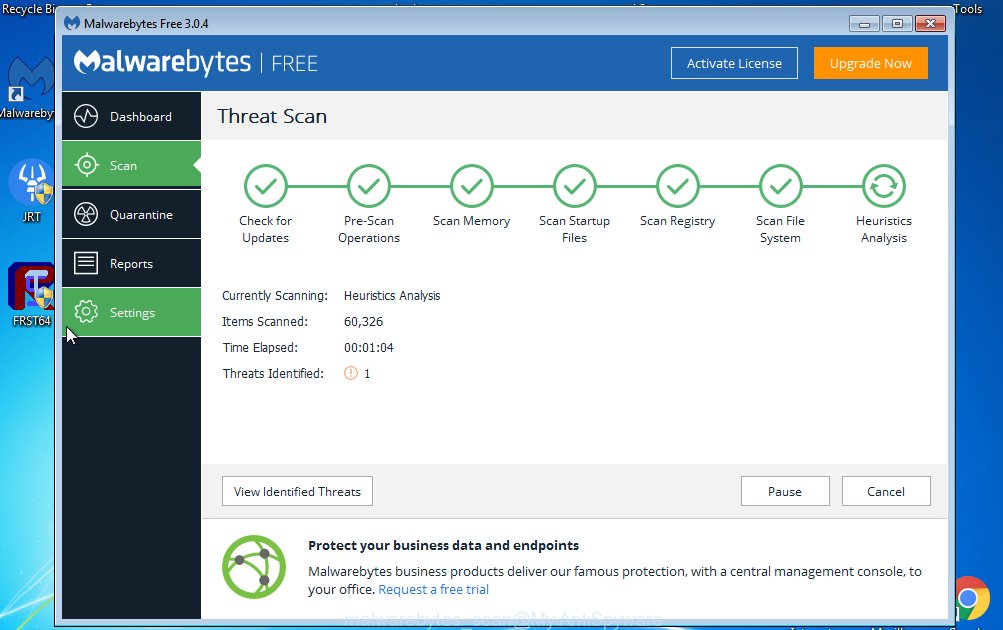
Once the scan is done, you can check all threats detected on your machine. Make sure all entries have “checkmark” and click “Quarantine Selected” button.
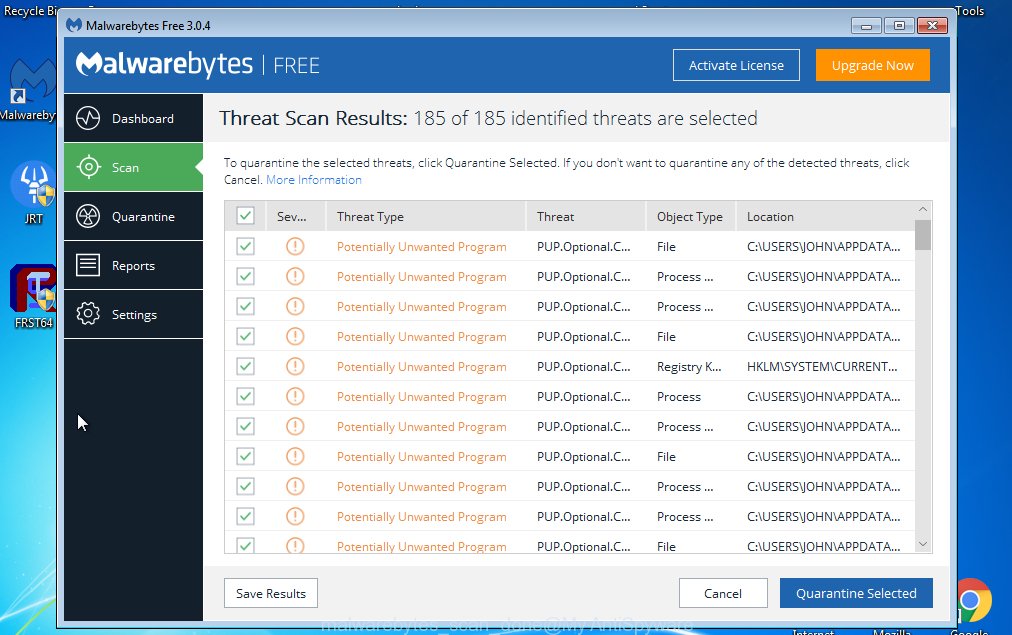
The Malwarebytes will begin removing malware and adware. Once the disinfection is complete, you may be prompted to restart your PC system. I recommend you look at the following video, which completely explains the procedure of using the Malwarebytes to delete ad-supported software and other dangerous programs.
How to block Adobe Flash Player pop-up
To increase your security and protect your system against new annoying ads and malicious web sites, you need to use an application that stops access to dangerous ads and sites. Moreover, the program can stop the display of intrusive advertising, that also leads to faster loading of pages and reduce the consumption of web traffic.
- Download AdGuard program by clicking on the following link.
Adguard download
26843 downloads
Version: 6.4
Author: © Adguard
Category: Security tools
Update: November 15, 2018
- When the download is complete, start the downloaded file. You will see the “Setup Wizard” window. Follow the prompts.
- Once the installation is finished, click “Skip” to close it and use the default settings, or press “Get Started” to see a quick tutorial which will allow you get to know AdGuard better.
- In most cases, the default settings are enough and you do not need to change anything. Each time, when you run your personal computer, AdGuard will launch automatically and stop ads, unwanted pop-ups, as well as other malicious or misleading web-sites. For an overview of all the features of the application, or to change its settings you can simply double-click on the AdGuard icon, that is located on your Windows desktop.
Scan your PC system and remove Update Adobe Flash Player pop-up with AdwCleaner
This removal program is free and easy to use. It can scan and delete ad-supported software, browser hijackers, malware and unwanted toolbars in Chrome, Internet Explorer, Mozilla Firefox and MS Edge web browsers and thereby restore back their default settings (homepage and search engine by default). AdwCleaner is powerful enough to find and remove malicious registry entries and files that are hidden on the computer.
Download AdwCleaner utility by clicking on the link below. Save it to your Desktop so that you can access the file easily.
225545 downloads
Version: 8.4.1
Author: Xplode, MalwareBytes
Category: Security tools
Update: October 5, 2024
After the download is finished, open the file location and double-click the AdwCleaner icon. It will run the AdwCleaner utility and you will see a screen as shown on the screen below. If the User Account Control prompt will ask you want to open the application, click Yes button to continue.

Now, click the “Scan” to start checking your computer for the ad-supported software which cause fake Update Adobe Flash Player popups.

Once the system scan is done, it will show a list of all items detected by this utility like below.
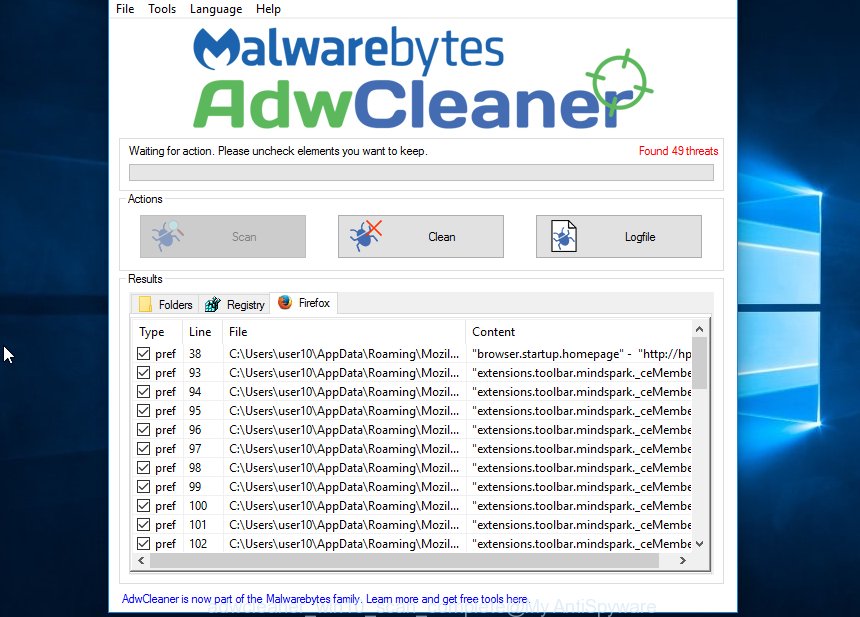
You need to click “Clean” button. It will display a prompt, click “OK” to begin the cleaning process. Once the cleaning procedure is done, the AdwCleaner may ask you to reboot your personal computer. After restart, the AdwCleaner will show the log file.
All the above steps are shown in detail in the following video guide.
Finish words
Once you have complete the step-by-step instructions outlined above, your personal computer should be clean from malware and ‘ad supported’ software. The Chrome, FF, Microsoft Edge and IE will no longer show Adobe Flash Player pop-up or redirect you to unwanted sites. Unfortunately, if the step-by-step guide does not help you, then you have caught a new type of adware, and then the best way – ask for help in our Spyware/Malware removal forum.













